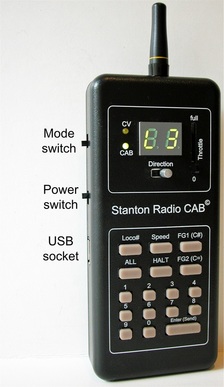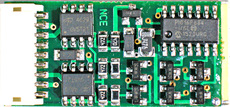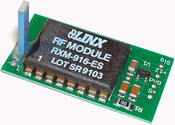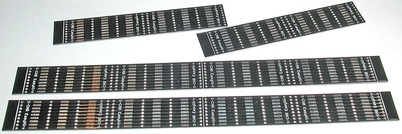Radio ControlRadio control requires a transmitter and a receiver. When using an S-CAB system, an S-CAB throttle is the radio transmitter and each item of traction equipment, typically a loco, requires a compatible S-CAB receiver. Operating sessions with more than one participant require a throttle for each loco operator.
However, non-radio controlled locos can continue to operate with their respective controllers, but be aware that various manufacturers' wireless throttles can cause radio interference. The S-CAB ThrottleDuring an operating session, an S-CAB throttle can control up to 15 locomotives with decoder addresses from 1 to 99. It's designed for one-handed use with slide throttle and direction switch arranged so a user can watch the layout while operating with the controller held, relaxed at arm's length, by his/her side. There are no batteries to replace. S-CAB throttle includes a rechargeable battery, which can be recharged from any USB socket.
|
S-CAB Radio Receiver (LXR)
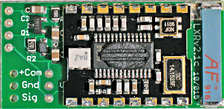
The latest version of the S-CAB radio receiver measures 1.42" x 0.69" x 0.125" (36 x 17.5 x 3 mm). The crosswise mounted antenna shown in the photo is now standard and typically provides 30 feet radio range indoors. Since there are no components on back of the circuit board (which serves as the radio ground-plane), a decoder can be mounted back-to-back with the radio circuit board, so long as no components are placed in close proximity behind or in front of the antenna. Some "air-space" around an antenna generally improves its performance.
Loco Receivers for HO, On3, On30 and some S-scale installations
A loco receiver is an S-CAB receiver combined with a commercially available decoder.
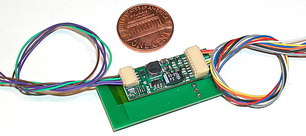
Sound installations: The standard S-CAB arrangement combines an LXR receiver with a SoundTraxx ECO-100 decoder. This replaces Tsunami decoders with similar or improved functionality, reduced size and lower cost.
- ECO-100 measurements are 1.1" x 0.42" x 0.2" (27 x 10.5 x 5 mm)
Decoders for larger scales
Since S-CAB receivers connect directly to decoder microprocessors, high current requirements of large-scale models are completely independent of radio control. For example, an LXR receiver can be packaged with NCE's 4 and 8 amp decoders.
Customized Packages
|
